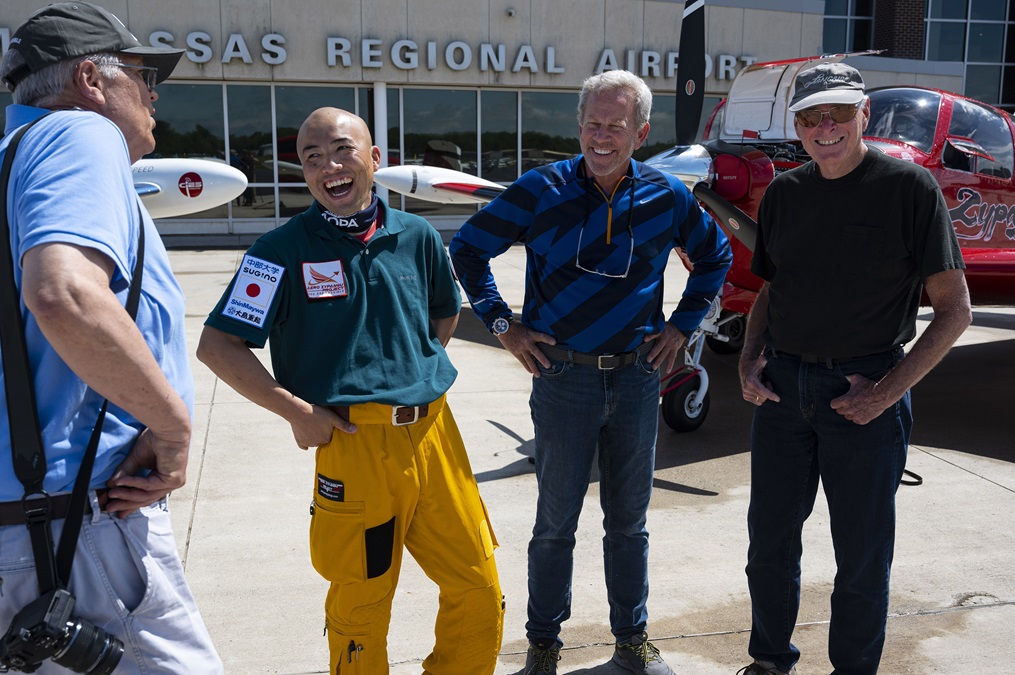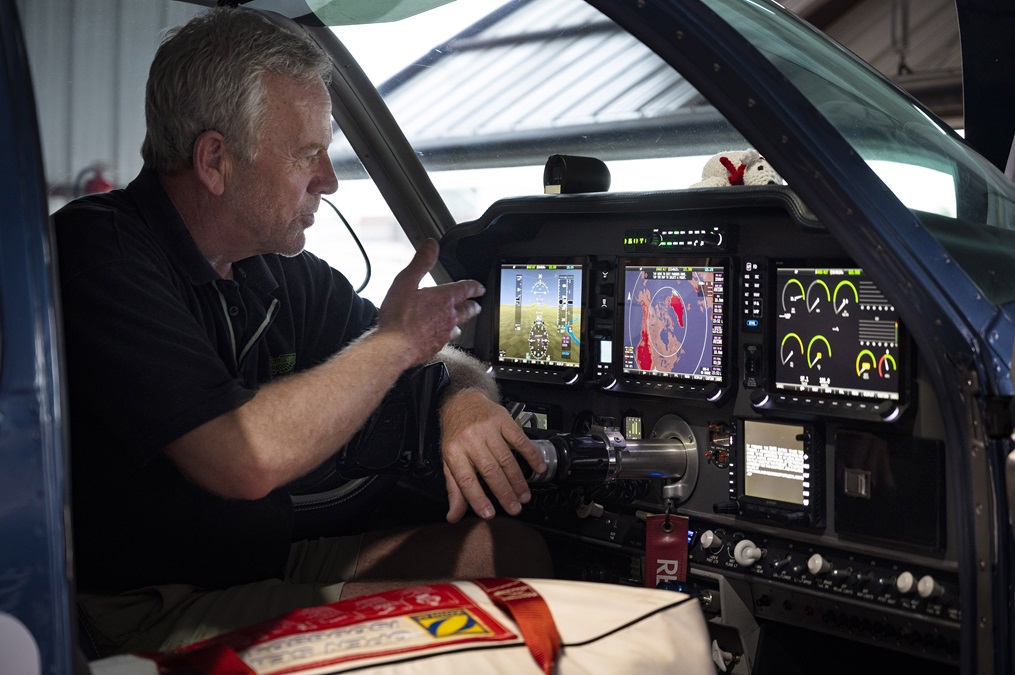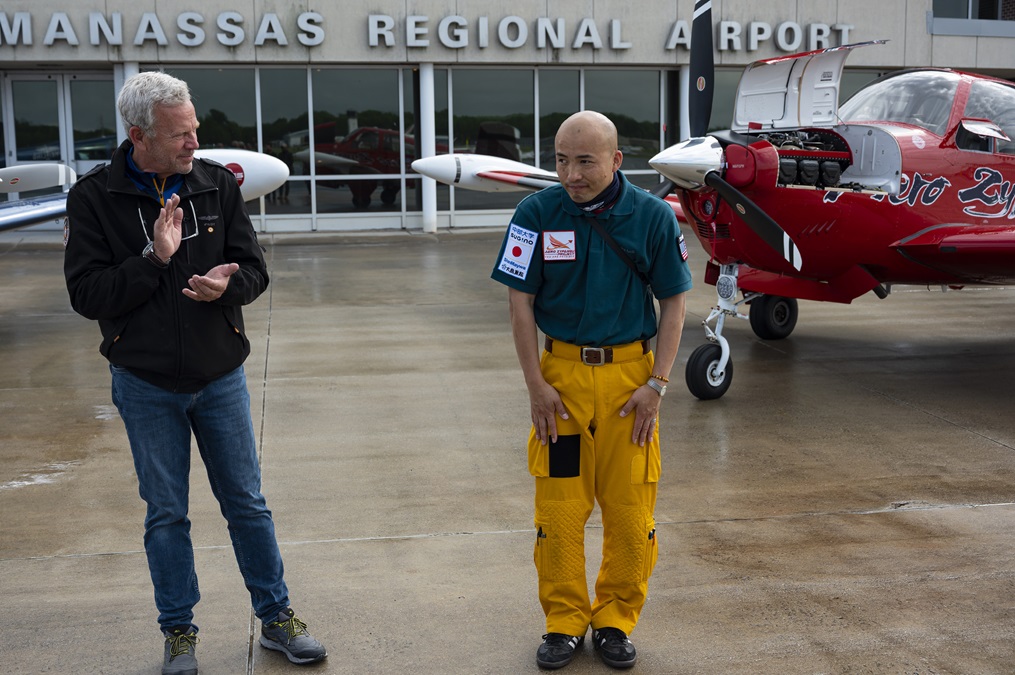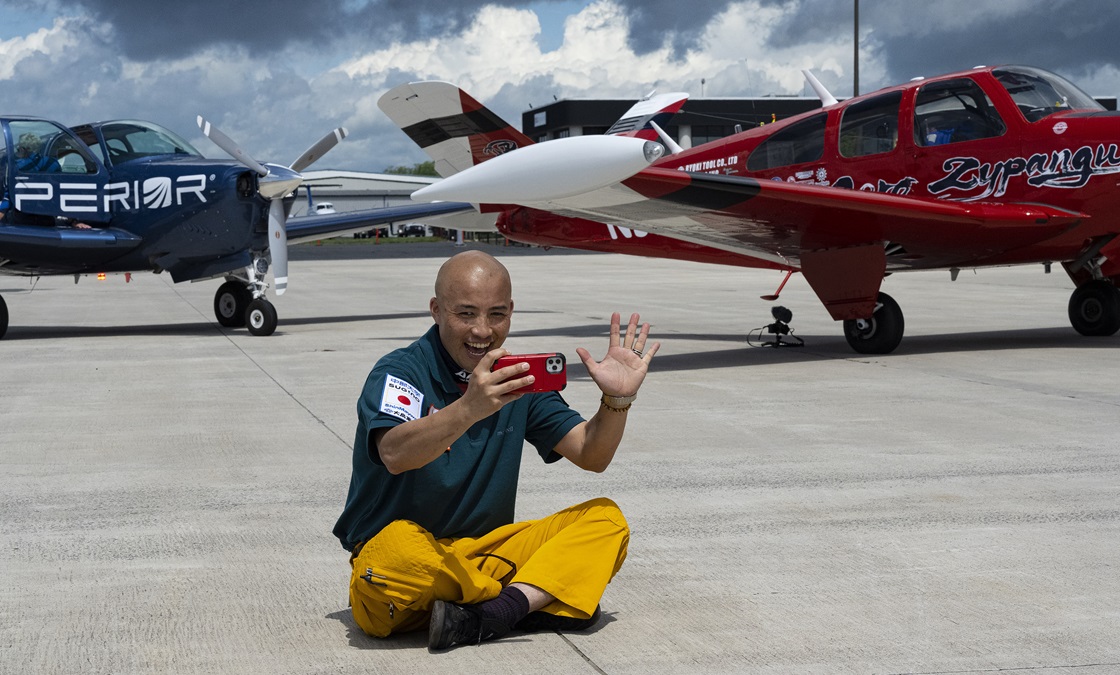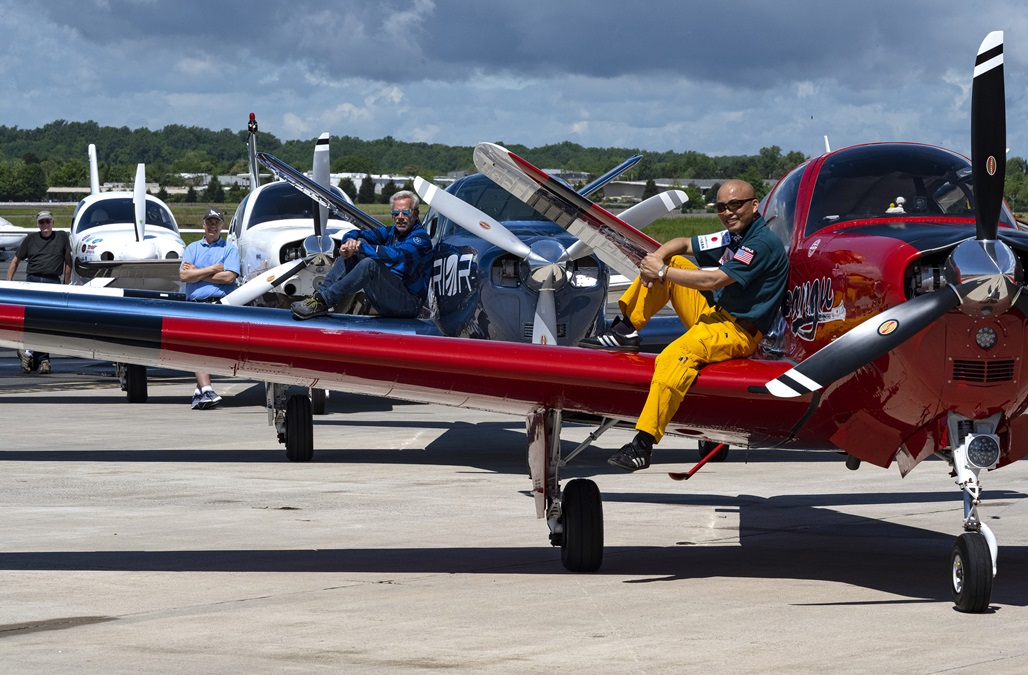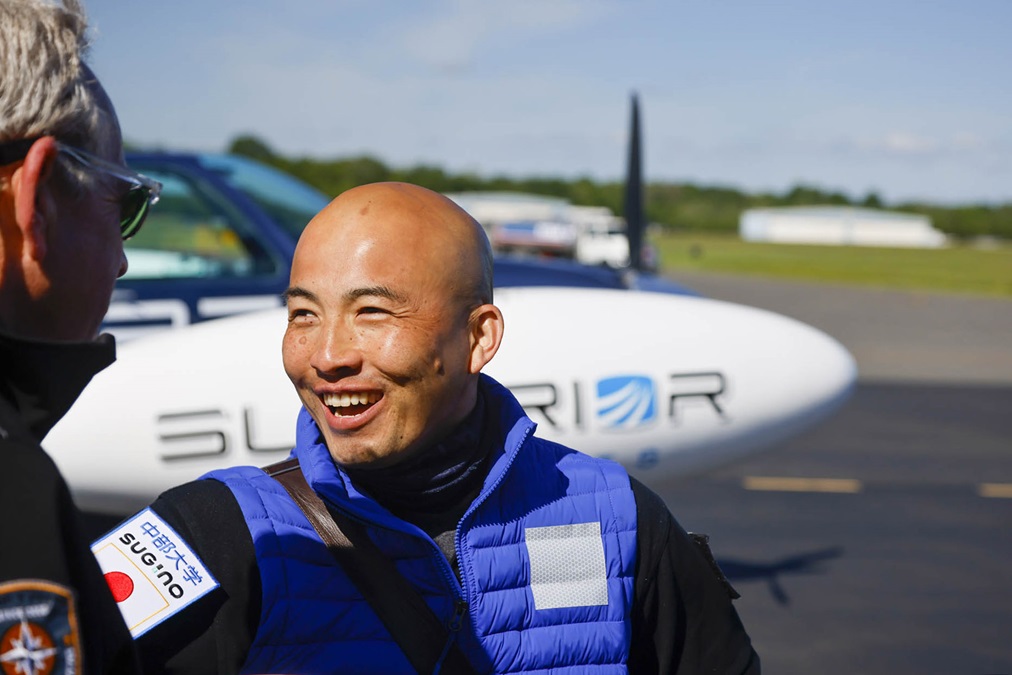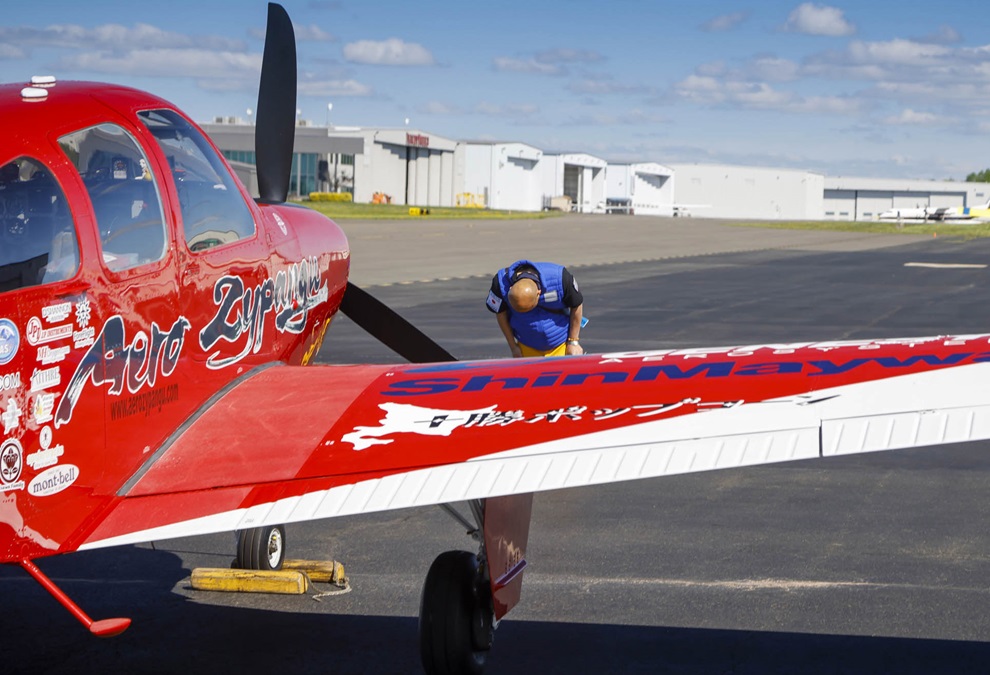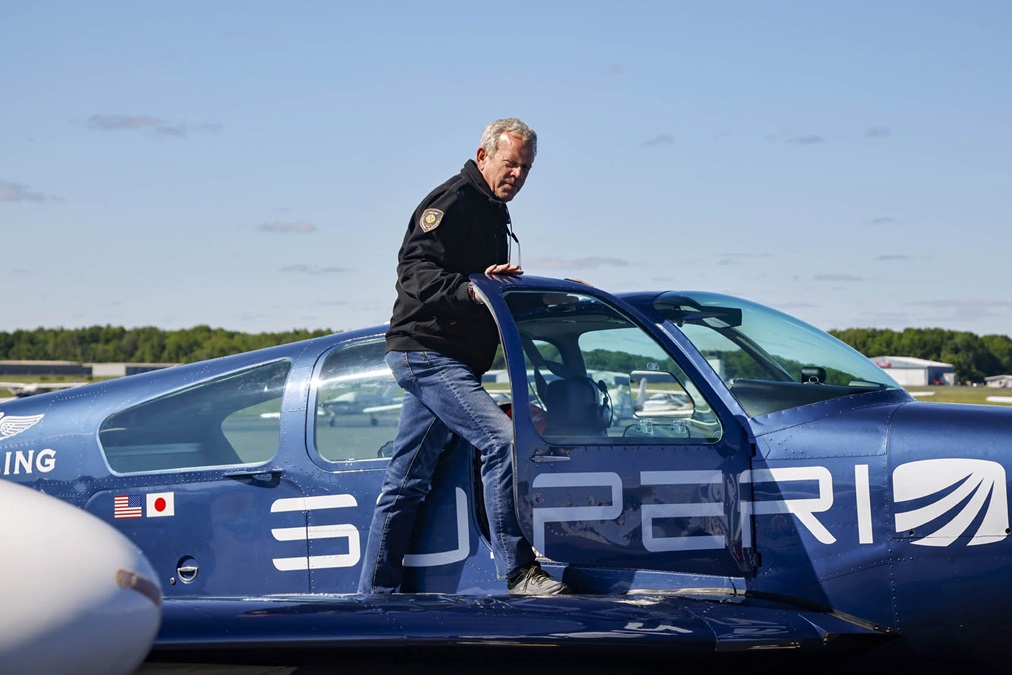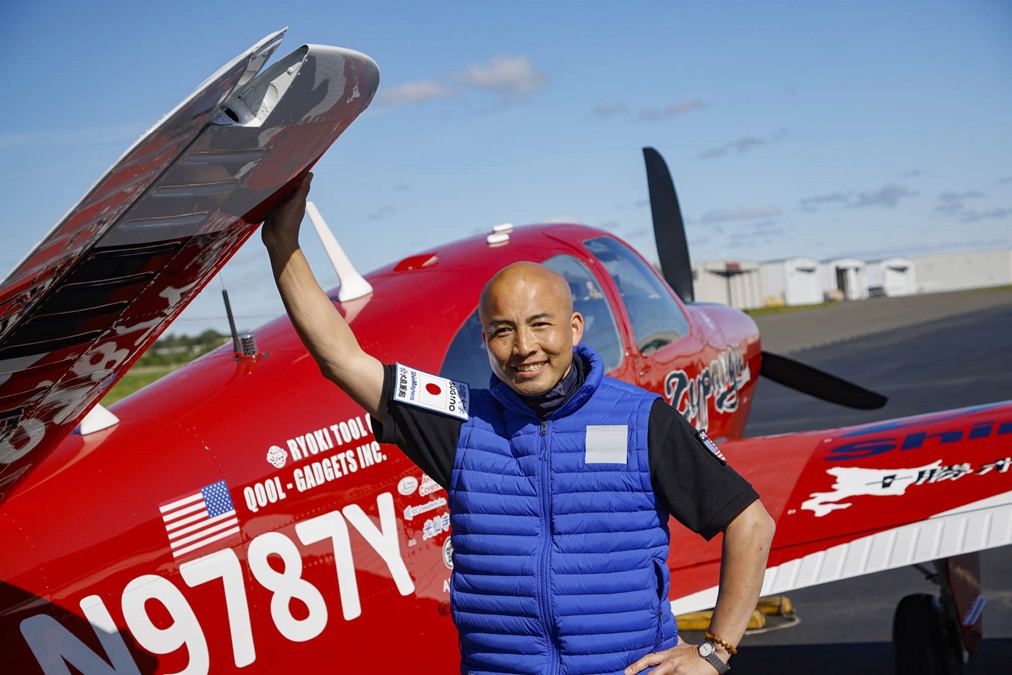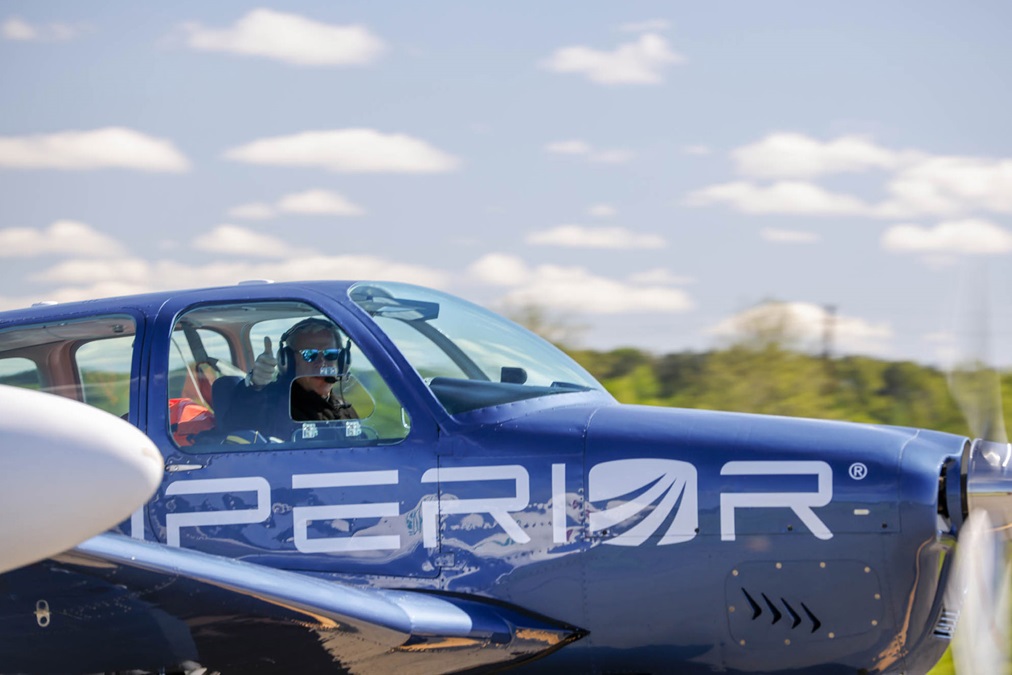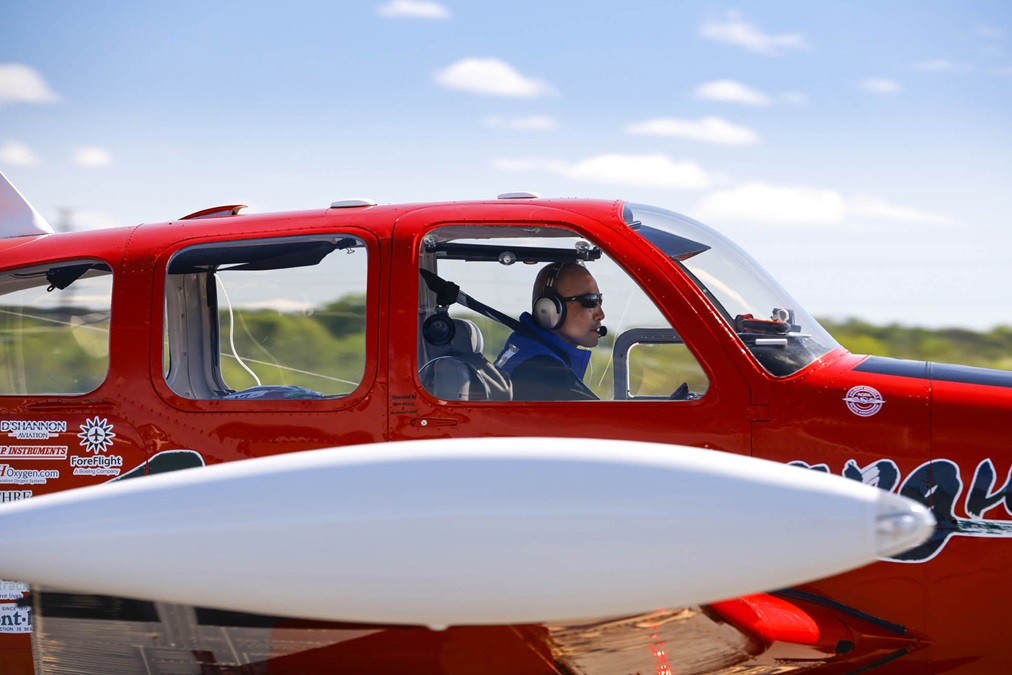Bonanza V35 pilots take off on ambitious journeys
Shinji Maeda around the world, Adrian Eichhorn over the North Pole
After last-minute repairs, tutoring, and a one-day weather delay, self-described “one-eyed pilot” Shinji Maeda and earthrounder mentor Adrian Eichhorn took off in formation May 6 from Manassas, Virginia, in nearly identical Beechcraft Bonanza V35 aircraft for separate ambitious aviation adventures.
The two were geared up to depart on May 5. Eichhorn, who piloted his 1962 P model single-engine Bonanza around the world in 2016, gave Maeda a hug and advice before the Japanese pilot bowed to a crowd of about 20 well-wishers gathered for the sendoff at Manassas Regional Airport/Harry P. Davis Field.
Fellow Bonanza earthrounder Adam Broome (2016) flew in to wish both pilots well, and earthrounder Bill Harrelson (2019, 2015) presented Eichhorn with a loud lime green alarm clock during a brief pre-departure ceremony May 5. Eichhorn also broke into a container of home-baked chocolate chip cookies presented to him with an additional weight and balance chart to account for the tasty snack's additional payload. All four pilots posed for photos near their aircraft as the skies first brightened and then clouded over before afternoon downpours.
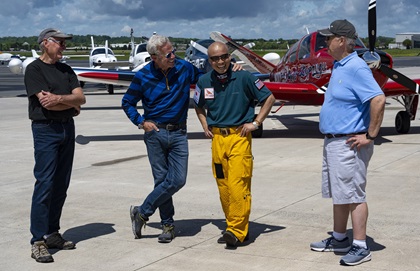
Maeda and Eichhorn plan to fly their V-tails in a loose formation to Bangor, Maine, then onward as far as Iceland so the mentor can continue to support his protégé with high frequency radio calls and some final encouragement.
Over the frigid North Atlantic Ocean, Eichhorn will continue north over the top of the world and the North Pole before turning south to Ladd Army Airfield in Fairbanks, Alaska, and then Portland, Oregon. Maeda, in a red 1963 P model named Lucy, will split off to the east toward Europe during an earthrounding flight through 16 countries. The flight itinerary originally included only 12 countries before the FAA denied a request for additional fuel ferry tanks and sent Maeda back to the drawing board to add additional stops and complexity, but it didn’t deter him.
Maeda said his longest leg should be eight to 10 hours in the Middle East, while Eichhorn was prepared for a 20-hour leg during his polar overflight. The pilots said their nearly new Continental IO-550B 300-horsepower engines were expected to burn about 13 gallons per hour at 170 knots between 9,000 and 11,000 feet and operate at lean of peak. Maeda estimated the global journey would span eight weeks and cost about $40,000 for fuel, oil, fees, and accommodations.
The native of Japan suffered a crushed optic nerve as a teenager after a motorcycle crash and a monthslong hospital stay. Maeda said he felt like his career aspirations were dashed after he learned that regulations prevented him from pursuing flight training in his home country.

With encouragement from Maeda’s father, the road to recovery led to the United States and an aviation science degree from Embry-Riddle Aeronautical University in Arizona. From there, a college flight instructor reignited Maeda’s passion for flight. The federal air surgeon granted Maeda a statement of demonstrated ability, and he earned a private pilot certificate, an instrument rating, and a commercial pilot certificate. He also became a certificated flight instructor. His father, who died three years ago, pushed Maeda to share his personal story of perseverance. “He said, ‘Son, you didn’t give up. You didn’t commit suicide. You didn’t back down. You have to meet a whole bunch of people to tell them your story of this wonderful life’” as an aviator.
His mother dictated the Japanese inscription “dreams come true, make it happen,” hand painted on the Bonanza’s red tail cone that was one of the final pieces of the earthrounding journey to fall into place.
His life experiences encouraged Maeda to become a motivational speaker. He plans to spread his messages of hope to others during downtime in Greenland, Norway, France, Greece, Egypt, the United Arab Emirates, Pakistan, India, Malaysia, the Philippines, Japan, and Russia. Though the coronavirus pandemic has prevented public gatherings, Maeda is posting candid videos of his travels where he reveals his comedic personality, as well as serious advice about achieving one’s goals through determination, mentorship, and camaraderie. Maeda hopes his presence during a stopover in Japan may lead to reforms that could allow others to follow in his footsteps.
Maeda credits the U.S. aviation community for embracing him and supporting his hopes and aspirations. “This is my chance to pay it back to the aviation community. We all need hope, and we need a dream,” he said, pointing to the pandemic as proof that people are hungry for some good news. After a one-year pandemic-induced delay, Maeda said he was ready to go.
Maeda said he’s been repeating a phrase to psyche himself up as the departure neared. “‘This is it, Shinji, now it’s showtime,’” and he is ready to fly. “My message is that ‘you can do it.’”
Get updates on Maeda via the Aero Zypangu Project (Air Japan) homepage or Facebook; and follow Eichhorn's journey directly through Spidertracks.




